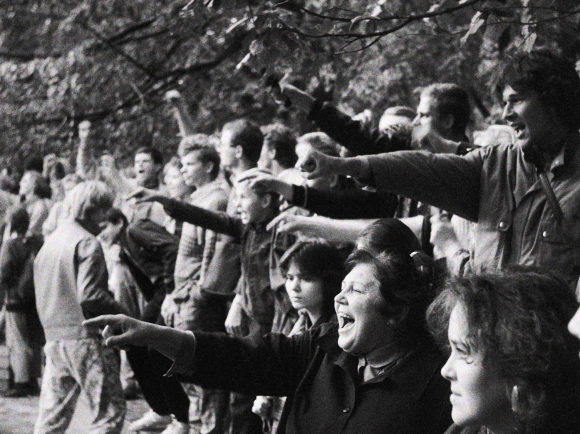Sergei Loznitsa’s film crew: "This was an experience like no other”

Director Sergei Loznitsa's film “Mr. Landsbergis” is unique not only for its story, unseen archive footage, but also for the way it was made. According to the film crew, working with Sergei Loznitsa was special, both in the editing and in the creation of the film's soundtracks, which there are many in the film.
According to the sound designer Saulius Urbonavičius, Loznitsa's film is unlike any other film he had worked on before. “This film is unique. Because usually when working with documentaries, it seems that authentic sound is an integral part of the documentary that cannot be touched. But working with Loznitsa is completely different. His unique approach to documentary has changed my understanding of sound in documentary footage. Loznitsa is not afraid to touch archival sound. He treats sound as clay from which old reality is restored and new one is created. There is no limit to improvisation when working with Sergei. If the sound in the archive footage is dirty, if there is noise or hissing, he immediately says – let's turn it off and create our own, that is – let's recreate the sound,” recalls Urbonavičius.
According to the sound designer, there is a lot of authentic sound recreated in this film. For this, people were invited to rerecord folk songs, chants, and record people's reactions. In the film, entire emotional, dramatic and even hysterical mass scenes in which sound plays an important role, were reconstructed. Lithuanian and Russian-speaking actors, as well as people without any acting experience, worked in the sound recording studio.
"Basically, we were working as some kind of sonic archaeologists. We collected authentic sounds of that time and tried to find the truth in silent archival footage. For example, there was a scene filmed at the so-called 'banana party' – a gathering that was dispersed by the police using batons (called ‘bananas’ in slang). There, one woman was shouting frantically something to another woman, but what she said was not recorded. At first, I remember, we improvised in the studio, what could she possibly be saying in such a situation? We speculated that maybe the other woman was her daughter, maybe she was saying to her – “Where are you going, can’t you see they are chasing the crowd with the ‘bananas’”? Then we sent that sequence to people who specialize in lip reading and we got a very unexpected answer – the woman was telling the other woman: “We need to start singing the Lithuanian national anthem now”. We would have lacked the imagination to come up with that. Reality is extremely interesting in itself, but to recreate it requires diligence and perseverance. Since it was a silent shot, of course we voiced it over,” says the film's sound designer Urbonavičius.
According to Danielius Kokanauskis, the film’s editor, he hasn’t worked on a film of this magnitude ever before. “I suppose, there are not many films of such scale in the history of world cinema. We went through thousands of hours of the archival footage, shared not only by journalists who filmed the events at the time, but also by ordinary people. And all the additional video footage that we watched on different channels. My head was exploding with information. We analysed images, google maps, read books, gathered information on the internet. But most of the time was spent trying to figure out what was happening on which day. It was important to recreate the sequence of events with historical accuracy, so that the viewer could touch those recreated events allowing the cinematic miracle to happen, that is taking the viewers on a journey to another reality,” says Kokanauskis.
According to the director Loznitsa, who is known around the world as the perfect chronicler of history, for him, having watched the Lithuanian people's journey to freedom just from the outside, it may have been even easier to work with sensitive historical material and create a cinematic narrative from it, which would be understandable to both Lithuanian and foreign audiences alike.
“A friend of mine, film critic Zara Abdullaeva, after watching the film, said: ‘I was a Lithuanian for four hours’. I think this is an important appreciation and the best recommendation the film could have”, says the film's director S. Loznitsa.
The film “Mr. Landsbergis” is currently showing in Lithuanian cinemas.
The film was produced by Studio Uljana Kim (Lithuania) together with Atoms&Void (The Netherlands).
